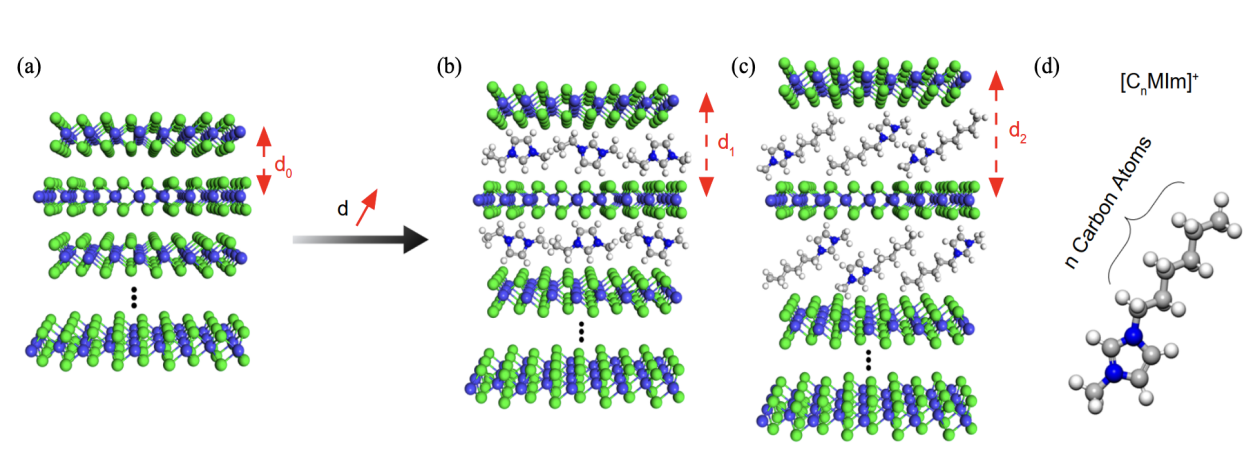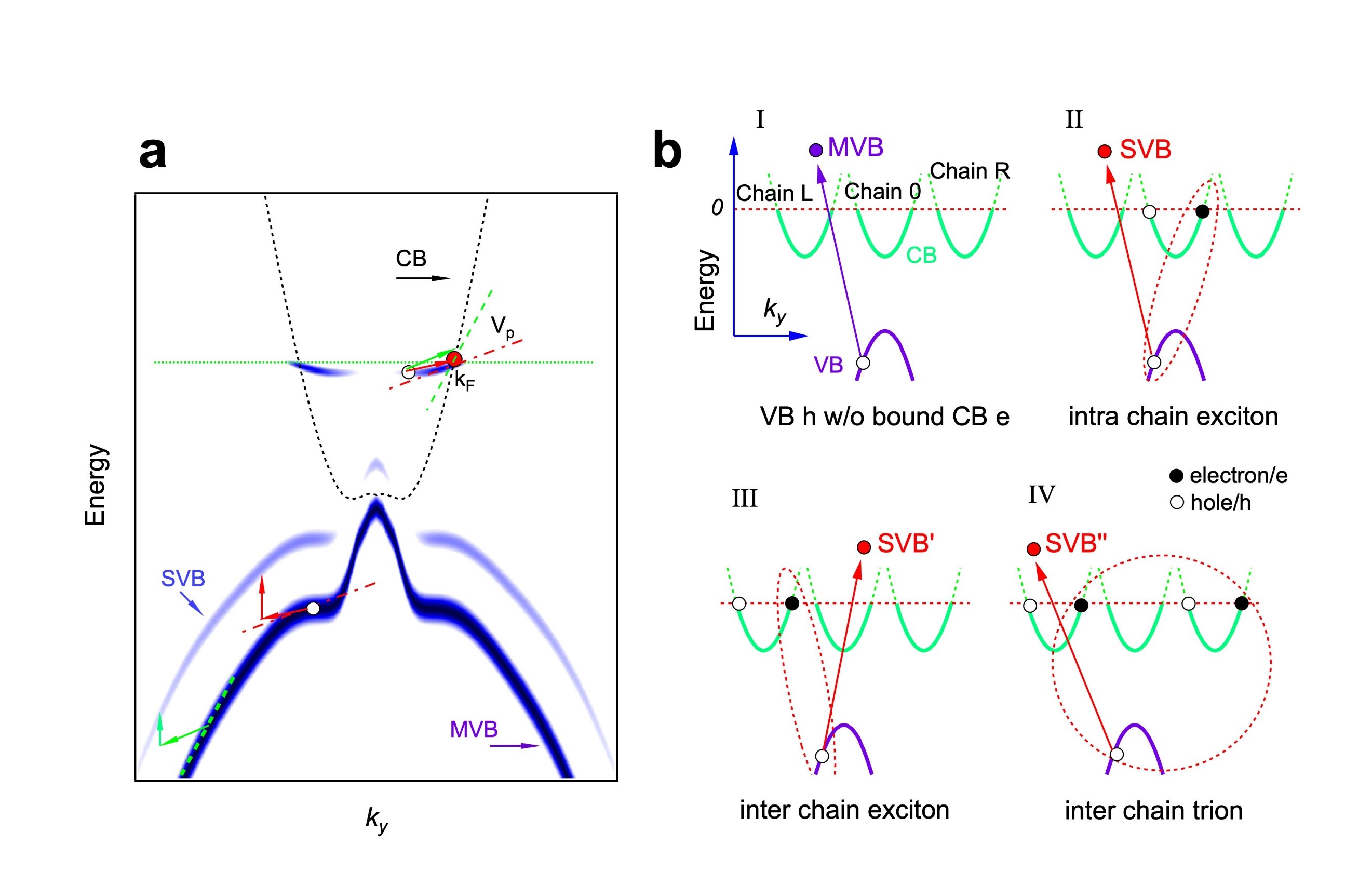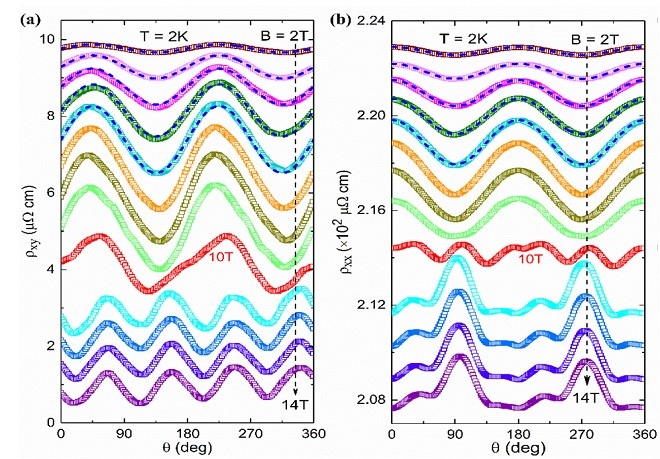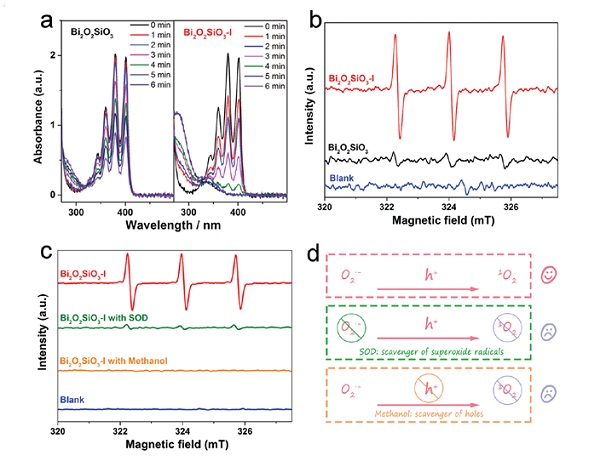
Sharpen tools before doing good job.
Although, this is an over-two-thousand-year long Chinese old saying, it holds through modern science where user facility plays an unprecedentedly critical role in its advancement.
Steady High Magnet Field Facility (SHMFF) contributes to science advancement in this way that it creates extreme conditions for scientific users who take SHMFF as sharpen tool to look deep inside matters revealing the unknown.
SHMFF’s User Committee Meeting 2023 announced Top ten achievements by SHMFF users throughout the year 2022, most of which provide insight into structure and properties on a micro but basic level letting us know more about how the world goes.
Controlling the superconductivity of NbSe2 through the intercalation method of ionic liquids cations

Quasi-two-dimensional layered materials exhibit abundant typical properties, which are highly dependent on dimensionality and carrier concentration. Therefore, manipulating dimensionality and carrier concentration is an important pathway to induce novel properties in layered materials.
Prof. ZHOU Shuyun from Tsinghua University and collaborators, including Prof. YU Pu, Prof. DUAN Wenhui, Prof. XU Yong, Prof. XUE Qikun, etc. developed a new strategy to engineer both the dimensionality and carrier concentration of layered materials through the intercalation of ionic liquids cations. The as-formed NbSe2 organic-inorganic hybrid crystals exhibited novel superconducting properties beyond both unintercalated bulk crystals and monolayer samples, which were confirmed by WM5 in SHMFF.
Journal: Nature Physics
Experimental facility: WM5 of SHMFF
More at: https://www.nature.com/articles/s41567-022-01778-7
Large momentum exciton observed in quasi-one-dimensional metal TaSe3

Charge neutrality and an expected itinerant nature make excitons potential transmitters of information. The creation in insulators of non-moving excitons (bound states from electrons and holes located at the minimum and maximum of the conduction band and valence band, respectively) by optical excitation is fairly standard and has been widely studied both theoretically and experimentally. Exciton mobility remains inaccessible to traditional optical experiments that only create and detect excitons with negligible momentum or group velocity. Exciting a moving bound state only with light involves a higher order process due to momentum conservation. The cross section of such process scales with the interaction strength that is usually very weak. Thus, excitons with large non-zero group velocity have been rarely investigated. Mobile excitons in metals have been elusive, as screening usually suppresses their formation.
Professor MA Junzhang from City University of Hong Kong with his international collaborators demonstrated such mobile bound states in quasi-one-dimensional metallic TaSe3 under SHMFF, taking advantage of its low dimensionality and carrier density. The excitons have intrachain or interchain modes. Interchain excitons are quasi-1D cousins of bilayer excitons in layered 2D materials, such as transition metal dichalcogenides. They are of particular interest as they may have a significantly longer lifetime due to the spatial separation of the particle and the hole and may have possible applications in the future.
Journal: Nature Materials
Experimental facility: WM5 of SHMFF
More at: https://www.nature.com/articles/s41563-022-01201-9#Ack1
A non-monotonic temperature dependent anomalous Hall effect observed in an Iridate Superlattice

As a new frontier of scientific research, the combined effect of electronic correlation with nontrivial complex hopping remains poorly understood in the intermediate regime, which calls for real experimental systems that can simulate and unveil the correlation-topology interplay.
SHMFF inhouse researcher HAO Lin collaborated with Prof. Jian Liu from University of Tennessee to perform an extensive study on the correlation-topology interlay in moderated correlated electron systems. Their work showed that the nontrivial electronic topology anticipated at the weak coupling limit leaded to an anomalous Hall effect (AHE). By performing high-field AHE measurements at SHMFF, they revealed that the AHE not only signifies Berry curvatures in the Hubbard bands but is also subject to the self-competition of the electron-hole pairing.
This work not only revealed the rich topology-correlation interplay but also demonstrated a controllable material platform for such investigations. The strategy of controlling gauge-dependent/-invariant complex hopping through artificial design could provide valuable insights for investigating topology-related physics in other correlated materials.
Journal: Physical Review X
Experimental facility: WM5 of SHMFF
More at: https://journals.aps.org/prx/abstract/10.1103/PhysRevX.12.031015
Unveiling Berry-curvature dominated linear positive magnetoresistance

Large linear positive magnetoresistance (LPMR) has been widely reported in topological materials, but the explanations for it are ambiguous. Especially, there still lacks experimental confirmation for the intrinsic mechanisms.
The research group led by Prof. LIU Enke from the Institute of Physics, CAS, grew and studied a topological material candidate, cobalt disulfide, which exhibited the largest positive MR among known magnetic topological materials. When the magnetic field was increased to 32T, measured by SHMFF, the positive MR didn’t show any signature of saturation. Then they established a physical model of Berry-curvature-dominated LPMR based on a 3D-Weyl-node model, and further provided experimental evidence for this mechanism.
This study unveiled the relationship between Berry curvature and LPMR, thus facilitating the understanding and functional design of LPMR materials for magnetic sensing or information storage.
Journal: Proceedings of the National Academy of Sciences of the United States of America
Experimental facility: WM5 of SHMFF
More at: https://www.pnas.org/doi/10.1073/pnas.2208505119
Planar Hall effect with period of π/2 observed in antiferromagnetic topological insulator MnBi2Te4 flakes

SHMFF inhouse researchers NING Wei and ZHOU Jianhui explored the significance of orbital magnetic moment (OMM) in antiferromagnetic topological insulator MnBi2Te4 flakes through the measurement of planar Hall effect (PHE) under high magnetic fields. Their results reveal intriguing electromagnetic response due to the OMMs and also provide insight into the potential applications of antiferromagnetic topological insulators in developing spintronic devices.
Journal: Nano Letters
Experimental Facility: Measurement system of SHMFF
More at: https://pubs.acs.org/doi/10.1021/acs.nanolett.1c03232
Magnetic-field-oriented anion-exchange membranes for fuel cells

Anion exchange membrane fuel cells (AEMFC) are expected to replace their proton exchange counterparts for the advantage of being able to use non-noble-metal catalysts due to the alkaline environment. The design of their core components—anion-exchange membranes (AEM)—is crucial in achieving the desired AEMFC power outputs and performance stability.
A research team led by Professor YIN Yan from Tianjin University developed an oriented ferrocenium anion exchange membrane under strong magnetic field. The anion exchange membrane has ion transport channels arranged in the through-plane (TP) direction, which greatly improves the power output of AEMFC.
Due to the universal practicability of AEM in fuel cells, as well as water electrolysers, this material may find additional applications in other areas of renewable and clean energy.
Journal: Nature Energy
Experimental Facility: SM1 of SHMFF
More at: https://www.nature.com/articles/s41560-022-00978-y
Direct imaging and control of the nonvolatile multiple states in a skyrmion-based spintronic device

Professor MA Fusheng from Nanjing Normal University and his collaborators achieve a tunable evolution of artificial skyrmion crystals in nanostructured synthetic antiferromagnet multilayers, which are composed of perpendicular magnetic multilayers and nanopatterned arrays of magnetic nanodots. The evolution of skyrmion’s critical behaviors, such as nucleation, deformation, and annihilation, are directly revealed by using a home-built magnetic force microscopy. Most significantly, nonvolatile multiple states are realized at zero magnetic field via controlling the proportion of the annihilated skyrmions in the skyrmion crystal.
Their work demonstrates the tunability and flexibility of the artificial skyrmion platform, providing a promising route to achieve skyrmion-based multistate devices.
Journal: Applied Physics Reviews
Experimental Facility: SM2 of SHMFF
More at: https://pubs.aip.org/aip/apr/article/9/2/021404/2835451
Spatial Band Separation in a Surface Doped Heterolayered Structure for Realizing Efficient Singlet Oxygen Generation

Professor XIE Yi and Professor ZHANG Xiaodong with University of Science and Technology of China take bismuth oxysilicate (Bi2O2SiO3) with alternating heterogeneous layered structure as a model to realize, by idodine doping, spatial band separation, to promote the separation and transfer of photogenerated charge carriers, and to optimize band positions of Bi2O2SiO3, then to obtain efficient 1O2 generation.
Journal: Advanced Materials
Experimental Facility: Measurement system of SHMFF
More at: https://onlinelibrary.wiley.com/doi/10.1002/adma.202206516
Iron-catalysed reductive cross-coupling of glycosyl radicals for the stereoselective synthesis of C-glycosides

Stereochemically defined C-glycosides are prized for their biological activity. Developing a catalytic method that comprises non-precious metals to synthesize these C-glycosides remains challenging.
Cooperated with the High Magnetic Field Laboratory, Chinese Academy of Sciences (CHMFL), SHMFF users from the National University of Singapore and Nankai University found that iron-based catalyst promoted the facile generation of glycosyl radicals and successfully produced a diverse array of C-glycoside products functionalized with alkenyl, alkynyl or aromatic anomeric groups across a range of substrates. Mechanistic control and SHMFF experiments indicated that the active catalytic species were a low-valent iron complex formed through Mn reduction.
The method was applied in the stereoselective synthesis of bioactive C-glycosides and therapeutically relevant analogues.
Journal: Nature Synthesis
Experimental Facility: Measurement system of SHMFF
More at: https://www.nature.com/articles/s44160-022-00024-5
Constructing magnetosome-like structures with efficient tumor tissue penetration

The targeted delivery of antitumor drugs can effectively improve the efficacy of drugs and reduce the toxicity of drugs. Due to the increased interstitial fluid pressure and the dense extracellular matrix in tumor tissues, the average tumor targeting efficiency of current nanodrugs is less than 1%, which constitutes one of the bottlenecks in tumor treatment.
On the basis of studying the biomineralization mechanism of magnetotactic bacteria in nature, SHMFF inhouse researcher WANG Junfeng and his team biomimicks synthesized soft ferromagnetic magnetosome structure nanomaterials with efficient magnetic targeting and tumor tissue penetration. Relying on SM3 and NMR device of SHMFF, the performance of magnetosomes in tumor tissue penetration and magnetic targeting was verified at the animal level by an order of magnitude.
This work not only provided an efficient carrier for the magnetic targeting delivery of nanodrugs, but also provided a new model system for studying the biomineralization mechanism of magnetotactic bacteria in vitro.
Journal: Proceedings of the National Academy of Sciences of the United States of America
Experimental Facility: SM3 and NMR of SHMFF
More at: https://www.pnas.org/doi/10.1073/pnas.2211228119